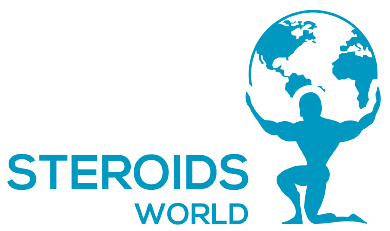The main substrate for the manufacture of oestrogen (estradiol), the main hormone involved in the female sex, in the male body is testosterone. Even though it may appear extremely rare for males to have oestrogen, testosterone and oestrogen have very similar structural makeup. The body of a man produces oestrogen, with a minor modification provided by the enzyme aromatase. Male body tissues such as adipose, liver, gonadal, central nervous system, and skeletal muscle tissues all exhibit aromatase activity. The quantity of oestrogen generated in the typical healthy guy is often not particularly relevant to one’s body disposition and may even be advantageous in terms of cholesterol levels. However, at larger doses, it does have the potential to produce several undesirable consequences, such as body fat growth, gynecomastia, and water retention. For these reasons, many people concentrate on reducing the accumulation or activity of oestrogen in the body using antiestrogens like Clomid or Nolvadex or aromatase inhibitors like Arimidex and Cytadren, especially when gynecomastia is a concern, or the athlete is attempting to increase muscle definition. However, we must not be misled into believing that oestrogen has no useful properties. In many ways, it is a desirable hormone.
Estrogenic steroids are the finest bulk builders, as athletes have long known, but we are only just beginning to comprehend the underlying mechanics. It seems that there are more factors at play than the straightforward improvements in size, weight, and strength that one may credit to water retention caused by oestrogen, as this hormone has a direct impact on the anabolic process. Increases in glucose uptake, growth hormone release, and androgen receptor proliferation are symptoms of this.
Estrogen may have a significant impact on how well muscle tissue utilises glucose by influencing the anabolic state’s development. This happens because of a change in the quantity of glucose 6-phosphate dehydrogenase, an enzyme crucial to the use of glucose for the development and repair of muscle tissue. More precisely, G6PD is an essential component of the pentose phosphate pathway, which plays a key role in dictating the pace at which nucleic acids and lipids are produced in cells for tissue repair. Levels of G6PD are reported to increase considerably during the time of regeneration following skeletal muscle injury, which is thought to be a mechanism for the body to speed up healing when necessary. Surprisingly, we discover a clear relationship between oestrogen and the quantity of G6PD that should be made accessible to cells during this recovery window.
A study showing that the levels of this dehydrogenase enzyme increase following the injection of testosterone propionate established the relationship between oestrogen and G6PD. The analysis further demonstrated that this rise was not caused by the androgenic properties of this steroid, but rather by the aromatization of testosterone to estradiol. When studied with testosterone propionate, the non-aromatizable drugs dihydrotestosterone and fluoxymesterone were ineffective in simulating the effects of testosterone. Additionally, the aromatase inhibitor 4-hydroxy androstenedione (formestane) prevented the beneficial effects of testosterone propionate, although 17-beta estradiol treatment alone increased G6PD in a manner comparable to that of testosterone propionate. Alpha estradiol, an inactive form of oestrogen that cannot attach to the oestrogen receptor, had no effect.
Further research employing the anti-androgen flutamide and the testosterone propionate demonstrated that this medicine did not interfere with the beneficial effects of testosterone, proving that they were independent of the androgen receptor.


















